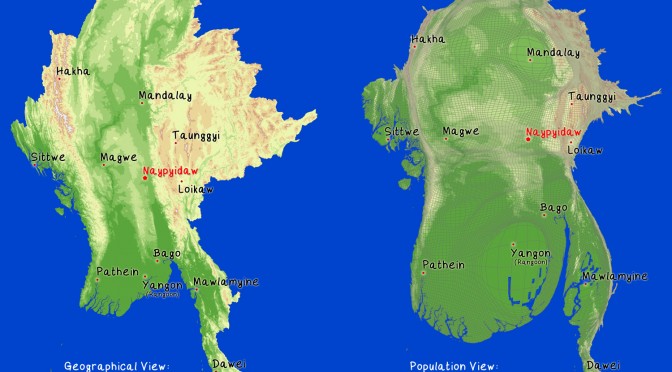Myanmar is moving to exploit solar and wind energy, but experts said such attempts must be stepped up to smoothen the country’s development.
Soe Soe Ohn, director of the national electrification project at the Rural Development Department, said solar energy offered high potential particularly in rural electrification.
Some homes are equipped with solar panels and more are in the pipeline to increase off-grid supply.
“According to our national plan, off-grid electrification for this fiscal year will focus on households, rural health centres, schools, religious buildings and rural street lights.
“To meet the target, solar system plays a key role,” she said at the Myanmar Green Energy Summit last week.
Under phase 1 of the national energy plan 2016-21, 461,000 households in Sagaing, Ayeyarwady and Thanintharyi regions as well as Kayin, Chin, Rakhine and Shan states will be electrified by solar systems.
Solar and mini-grids will serve 19,000 street lights and 11,000 public institutions, such as schools, clinics and religious buildings, over the five years.
Despite the potential, the Electricity and Energy Ministry just awarded contracts for large-scale solar farms early this year.
One project in Magway region, with 220 megawatts in capacity, was awarded to Green Earth Power (Myanmar). It will take four years to complete the 836-acre solar farm.
At the summit, Thomas Chrometzka, director of renewable energy at GIZ, a German development agency, stressed the urgent need for Myanmar to address power shortages in industrial estates with renewable energy, particularly solar.
Manufacturing is now powered by two systems – grid power and diesel generators.
But due to limited supply, in 2014, only 26.5 per cent of grid power was supplied to the sector, leaving it to rely heavily on generators.
This creates favourable conditions for the installation of solar systems, he said.
“Myanmar’s growing agro-industry has high electricity demand such as for cooling and manufacturing is not very developed yet but growing, like textiles.
“So far, all the industrial zones do not get 24-hour electricity. Access to reliable electricity constrains not only companies in Myanmar but also potential investors,” he said.
Myanmar is home to three special economic zones and 19 industrial zones. All SEZs promise 24-hour electricity.
Renewable energy is sustainable and allows industries and the economy as a whole to develop in the long term.
Renewables not only benefit remote areas unconnected to the grid but also support grid-connected consumers.
“Solar is an independent power resource and cheaper than diesel-generated generators.
“It can also bring technical transfers and technological innovations that have positive spill-over effects on the economy. It also helps build human capacity,” he said.
“Your choice should depend on what kind of services/electricity demand you have. There is no one-size fits all solution.
“The quick win will be the solar system because all the electricity produced can be immediately consumed.”
Myanmar still lacks regulations on renewable energy while local firms have limited experience with complex systems, which together constrain the solar system’s potential.
Tax incentives including exemptions on import duty and commercial sales tax for equipment as well as power purchase agreements should be adopted.
On wind power, a memorandum of understanding was signed for three projects to be completed by 2031 – a 1 gigawatt project in Tanintharyi region, Mon and Kayin states; a 1.9GW project in Shan and Kayah states; and a 1.1GW project in Chin and Rakhine states and Ayeyawady and Yangon regions.
Thi Thi Soe, deputy director of the Education Ministry’s Research and Innovation Department, said research confirmed the potential of wind power in many parts of the country.
On the plus side, wind costs less than solar and can generate power day and night. However, the government’s support was needed.
Myanmar needs to complete a renewable energy policy and guidelines and strengthen the institutional framework between ministries and other organisations.
It needs to encourage development of wind resource assessment nationwide.
The incentive programme for the wind energy market should be supported by the promotion of private sector participation.


